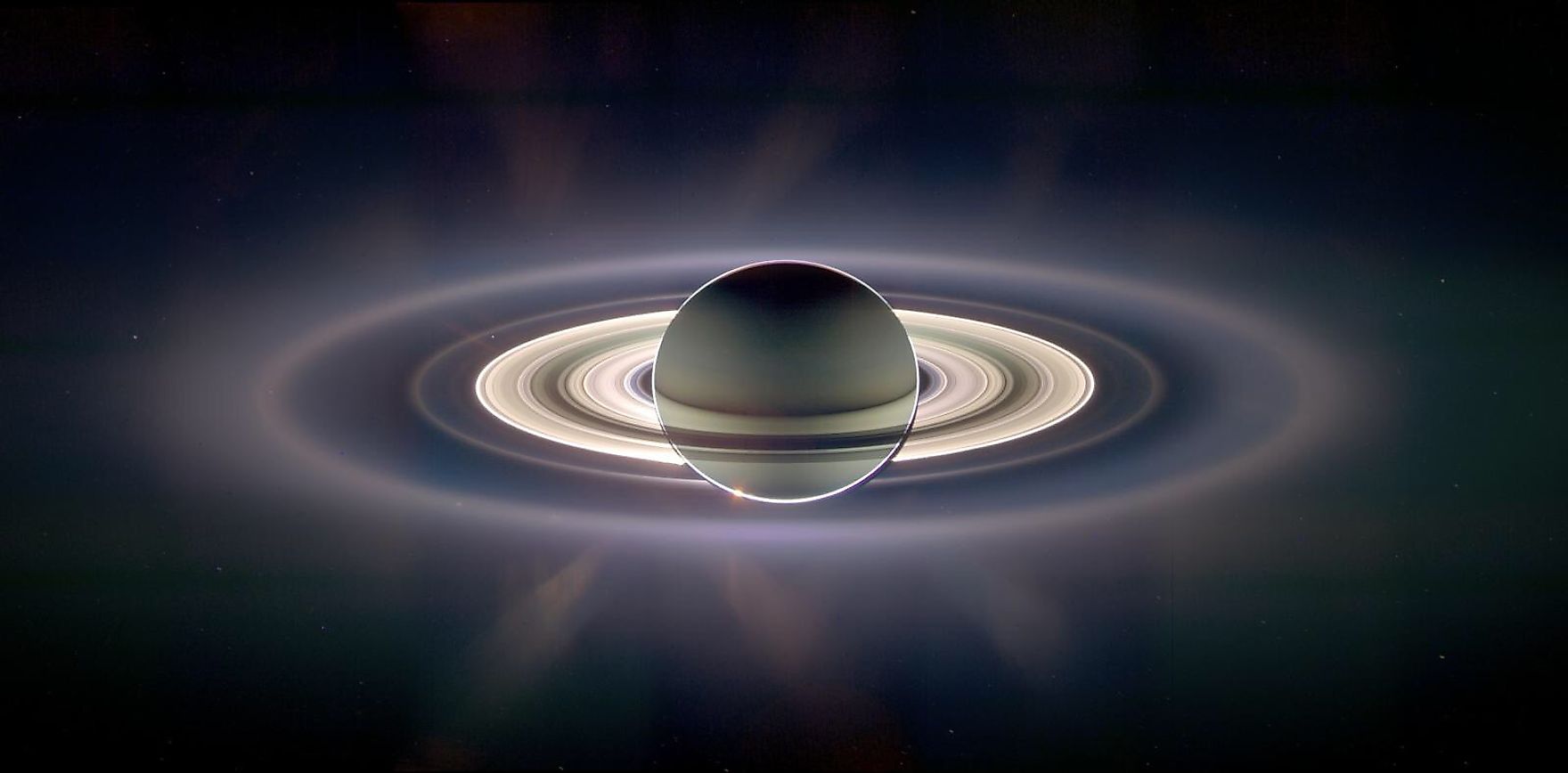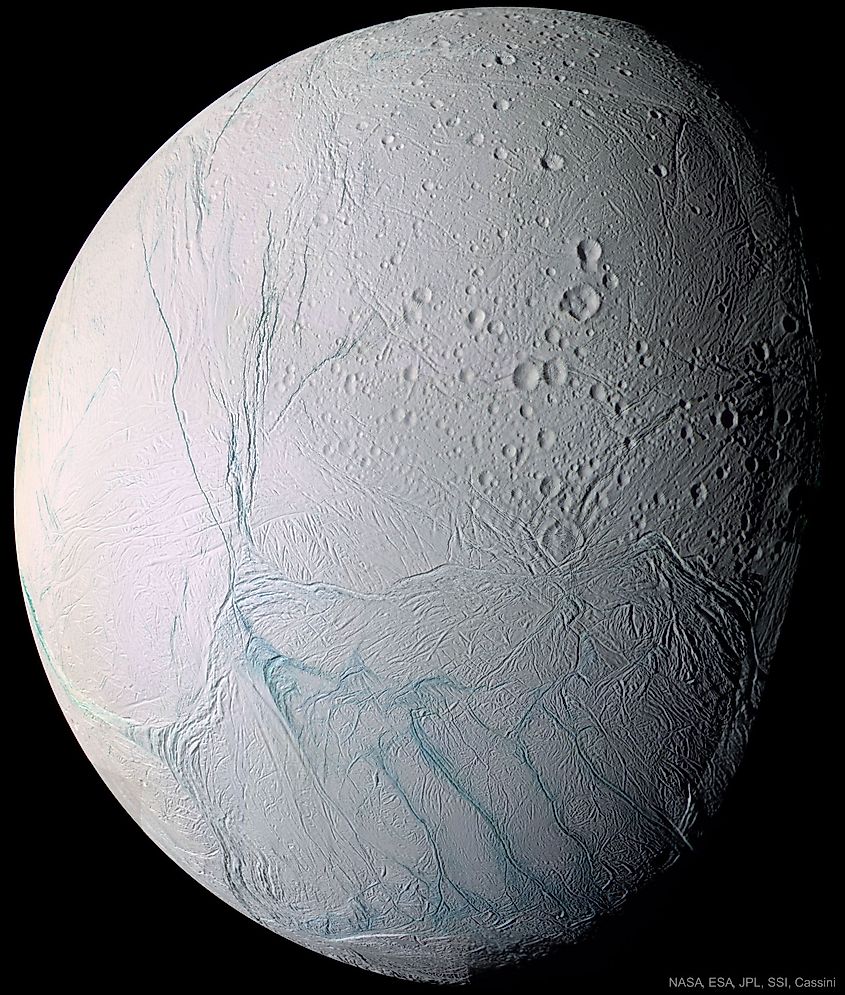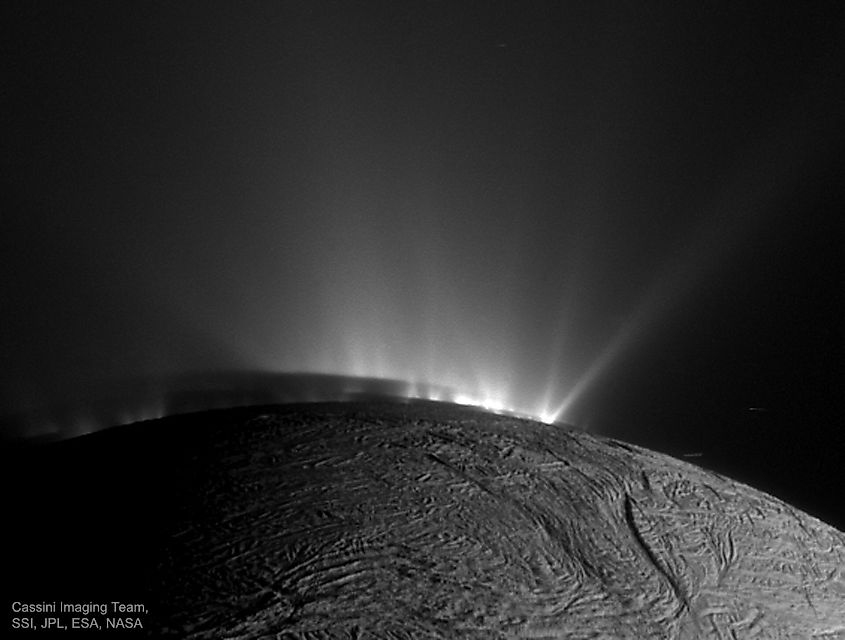
Saturn’s Moon Enceladus
Our solar system is home to a number of strange, intriguing moons. Perhaps one of the most intriguing moons in the solar system is Saturn’s moon, Enceladus. Enceladus was discovered by the astronomer William Herschel in 1789, and was named Enceladus by his son. Despite its existence being known for over two centuries, everything about Enceladus was a mystery until the Voyager flybys in the early 1980s. What astronomers found was a world unlike anything they’d ever seen. The surface of Enceladus was covered in ice. In fact, Enceladus is the most reflective world in the solar system. Since Enceladus reflects most of the sunlight that hits it, its surface temperature is exceedingly cold, averaging at minus 324 degrees Fahrenheit (minus 198 degrees Celsius). Enceladus is the sixth largest moon in the solar system with a diameter of 310 miles (500 kilometres). Enceladus orbits Saturn at an average distance of 148,000 miles (238,000 kilometres) and completes one orbit every 33 hours.
An Active Moon

Despite the success of the Voyager missions, a lot was still unknown about Enceladus. Hence, NASA planned the Cassini mission. Cassini would orbit Saturn for over a decade, taking some of the most stunning images of the ringed planet and its moons. Enceladus was one of Cassini’s more frequently visited worlds. Cassini revealed a world stranger than science fiction. The South Pole of Enceladus turned out to be its most interesting feature, and thus it was observed by Cassini on multiple occasions. The South Pole of Enceladus seemed to be ejecting some kind of material into space. Closer observations revealed that Enceladus was in fact releasing vast amounts of water vapor into space. This water was being blasted out of gigantic geysers located around the South Pole of Enceladus. The region was named the Tiger Stripes after the large stripes streaking across the South Pole. Geysers are generally indicators that a world is volcanically active, which suggests that the interior of Enceladus is very warm. This came as a surprise, being that tiny worlds such as Enceladus tend to release their heat to space fairly quickly. That’s why most moons, such as our own, are covered in craters and lack any evidence of recent activity. For such a small world to be so active suggests that Enceladus is being supplied with large amounts of energy. With the sun being too far away to supply enough heat, astronomers looked to Saturn. As Enceladus orbits Saturn, the gravity of the gas giant pulls on the small moon. This gradually flexes Enceladus, stretching the moon when it’s far and compressing it when it’s close. This flexing creates friction within the core of Enceladus, which melts subsurface rock and releases heat. This heat melts subsurface ice to form an underground ocean that could be ten times deeper than the deepest ocean on Earth. The warm subsurface ocean partially melts ice on the surface, creating the large cracks and fissures we can see today. As heat rises to the surface, it also causes large amounts of water to burst through the ice in the form of geysers. Some of this water vapor falls back and becomes a coating of fresh snow on Enceladus. The rest of the material escapes into space and becomes part of Saturn’s E-Ring.
Habitability Of Enceladus

The existence of liquid water on Enceladus makes it a potentially habitable world. In addition to liquid water, the Cassini spacecraft also detected organics in its geysers, and the geysers themselves suggest that the moon contains enough energy to support the formation of life. Cassini was able to determine the chemistry of Enceladus by flying through its geysers, sampling the water vapor and determining its composition. Unfortunately, Cassini was not equipped with the technology required to detect living organisms. If life does exist on Enceladus, it’s possible that some organisms would find themselves being ejected into space by geysers. A future mission to Enceladus could fly through the geysers and look for evidence of microscopic organisms.











